How to Implement Kanban in Your Business: The Complete Visual Guide
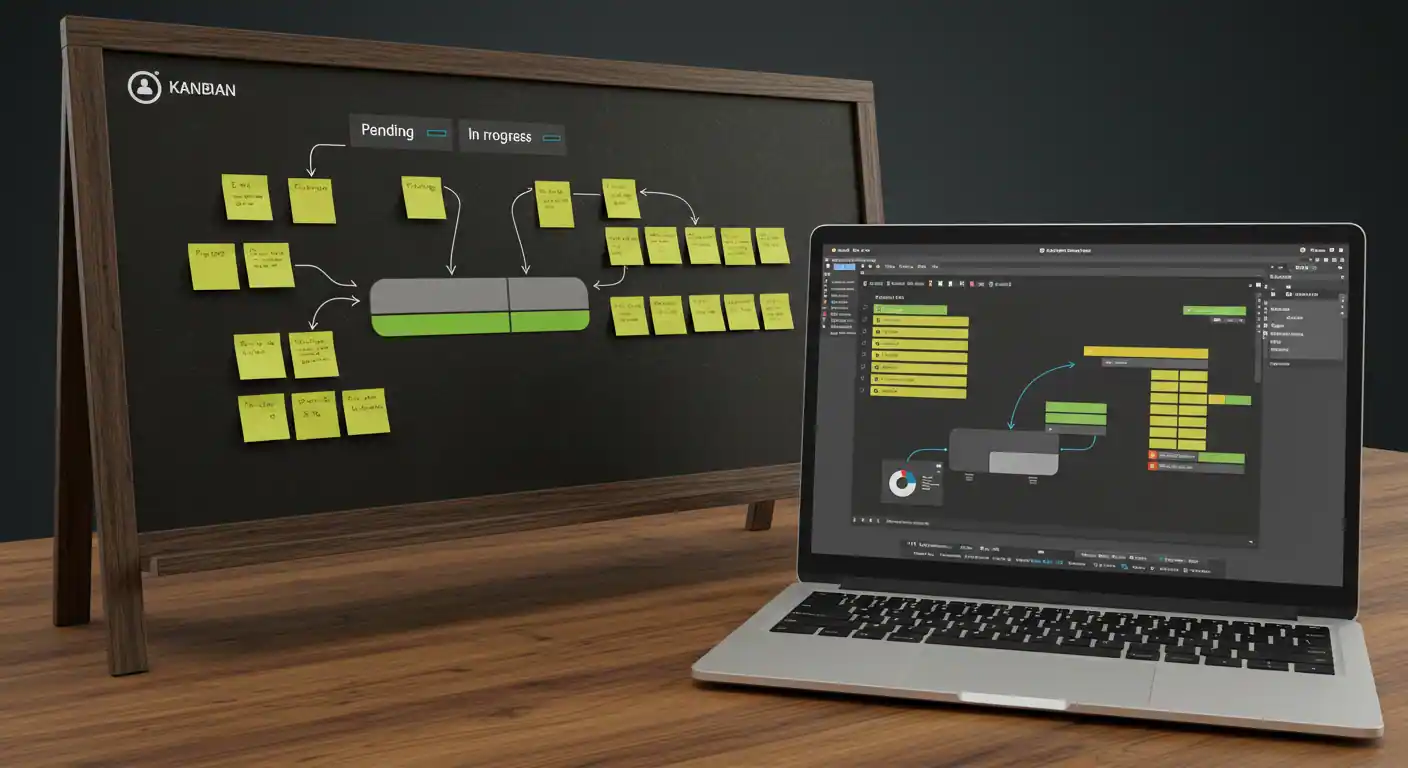
Is your business stuck in a constant state of “everything is urgent”? Do you and your team get lost between “to-dos,” “priorities,” and “completely forgot about that”? If implementing Kanban in your business sounds complicated or too technical, I have news for you: you’re about to discover the simplest and most visual method to organize work that exists.
???? What you’ll master in this guide:
- Set up Kanban in 60 minutes
- 3 columns that eliminate chaos
- WIP limits that boost productivity
- Free vs premium tools comparison
- Industry-specific templates ready to use
Kanban isn’t just another trendy methodology. It’s your real opportunity to transform disorder into a clear, predictable, and productive workflow. And the best part: you can start today without expensive courses or complex systems.
What is Kanban? The Simple Answer You Need
Before jumping into implementation, let’s clarify what Kanban really means for your business.
Kanban means “visual card” in Japanese and was born in Toyota factories in the 1950s as a way to optimize production. The methodology visualizes the anticipated flow of demand, with all stages involved and actual work, allowing you to identify problems and improve efficiency.
???? What really matters for your business: Kanban is a visual board where each task is a card that moves through columns representing work phases. It’s that simple.
The American Business Approach to Kanban
We believe in the “Minimum Viable Kanban”: start with the basics and adjust as you go. You don’t need to create the perfect system from day one. The beauty of Kanban lies in its evolutionary simplicity.
????️ Clear Visualization
See all work at a glance
⚖️ Smart Limits
Avoid overwhelming with too many simultaneous tasks
???? Continuous Improvement
Adjust the system based on what works
Why Your US Business Needs Kanban (Real Benefits)
After implementing Kanban in multiple projects across different American markets, these are the changes you’ll actually see:
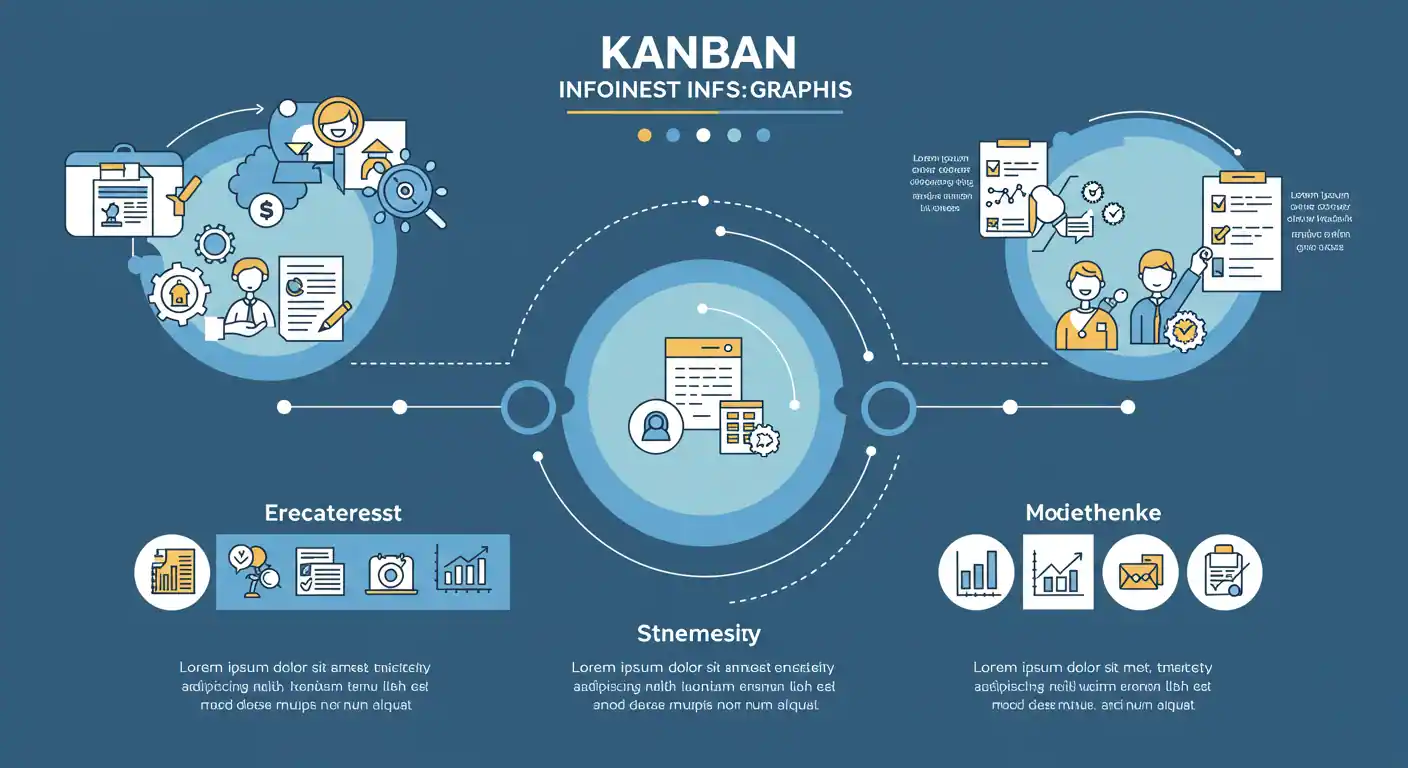
???? Complete Work Transparency
Your entire team knows exactly what their task is and what phase of the cycle it’s in. No more questions like “what are you working on?” or “when will it be ready?”
???? Bottleneck Elimination
By visualizing workflow, problems jump out immediately. If a column fills with cards, you know exactly where the issue is.
???? Better Workload Control
Kanban helps avoid overproduction and inefficient resource use, optimizing both materials and team time for maximum ROI.
???? Flexibility for Change
With a well-informed and focused team, Kanban offers an agile response to unexpected tasks while maintaining efficiency without sacrificing quality.
The American Business Method: 5 Steps to Implement Kanban Today
Step 1: Choose Your Tool (Physical vs Digital)
The first critical decision: physical or digital board?
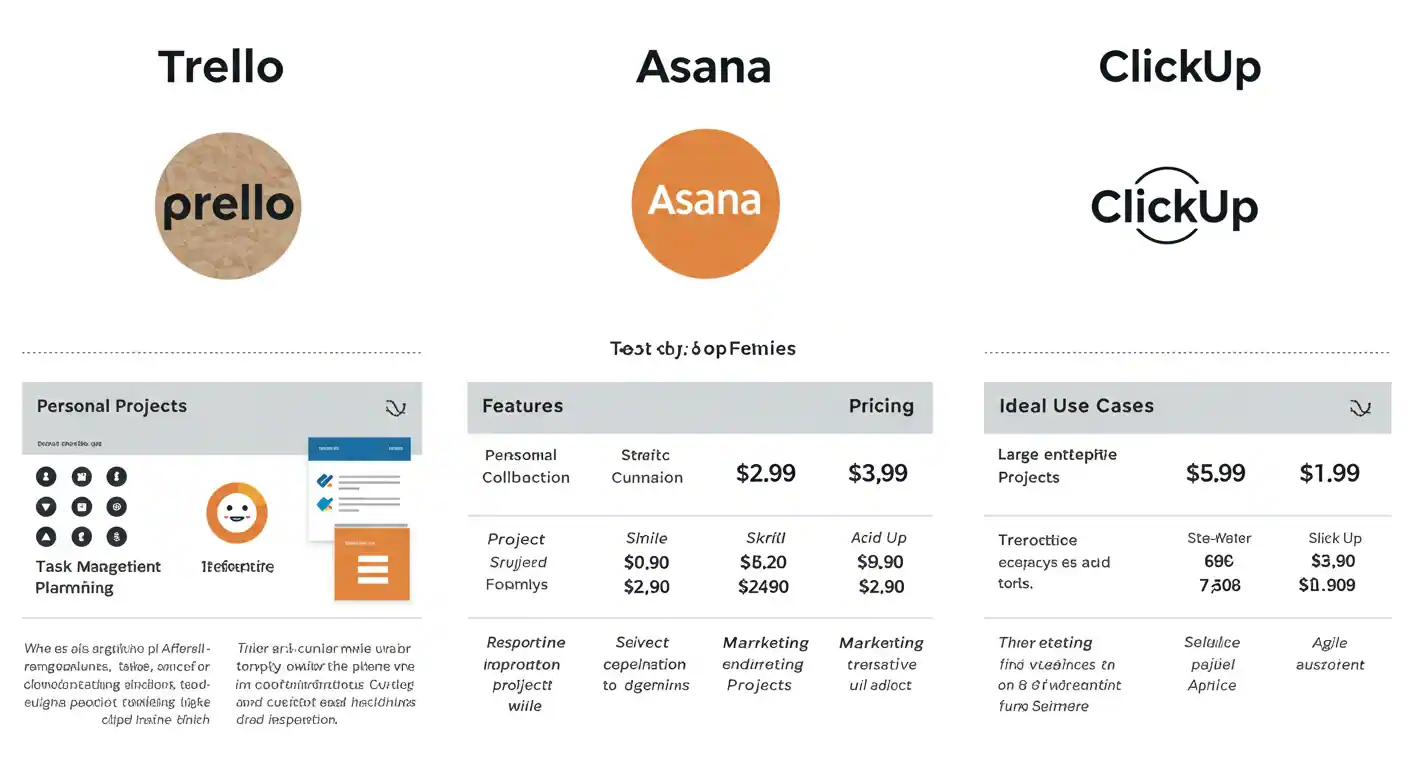
???? Physical Board (Whiteboard + Post-its)
Ideal for: Small teams (2-5 people), in-person work, simple processes
✅ Advantages:
- Immediate implementation (1 hour max)
- Higher team participation
- No technology dependency
- Minimal cost
❌ Disadvantages:
- Limited for remote teams
- Difficult historical tracking
- No automations
???? Digital Board
Ideal for: Distributed teams, complex processes, metrics needs
???? Recommended tools for US small businesses:
???? Trello (Free)
• Perfect to start: Just sign up and go!
• Up to 10 free boards
• Most intuitive interface on the market
???? Asana (Free up to 15 users)
• Multiple views (board, list, calendar)
• Premium plan from $10.99/user/month
• Excellent for growing teams
???? ClickUp (Robust freemium)
• Maximum customization
• Boards adapted to your exact flow
• Higher learning curve
Step 2: Define Your 3 Magic Columns
The secret of effective Kanban lies in initial simplicity. We start with the basics:
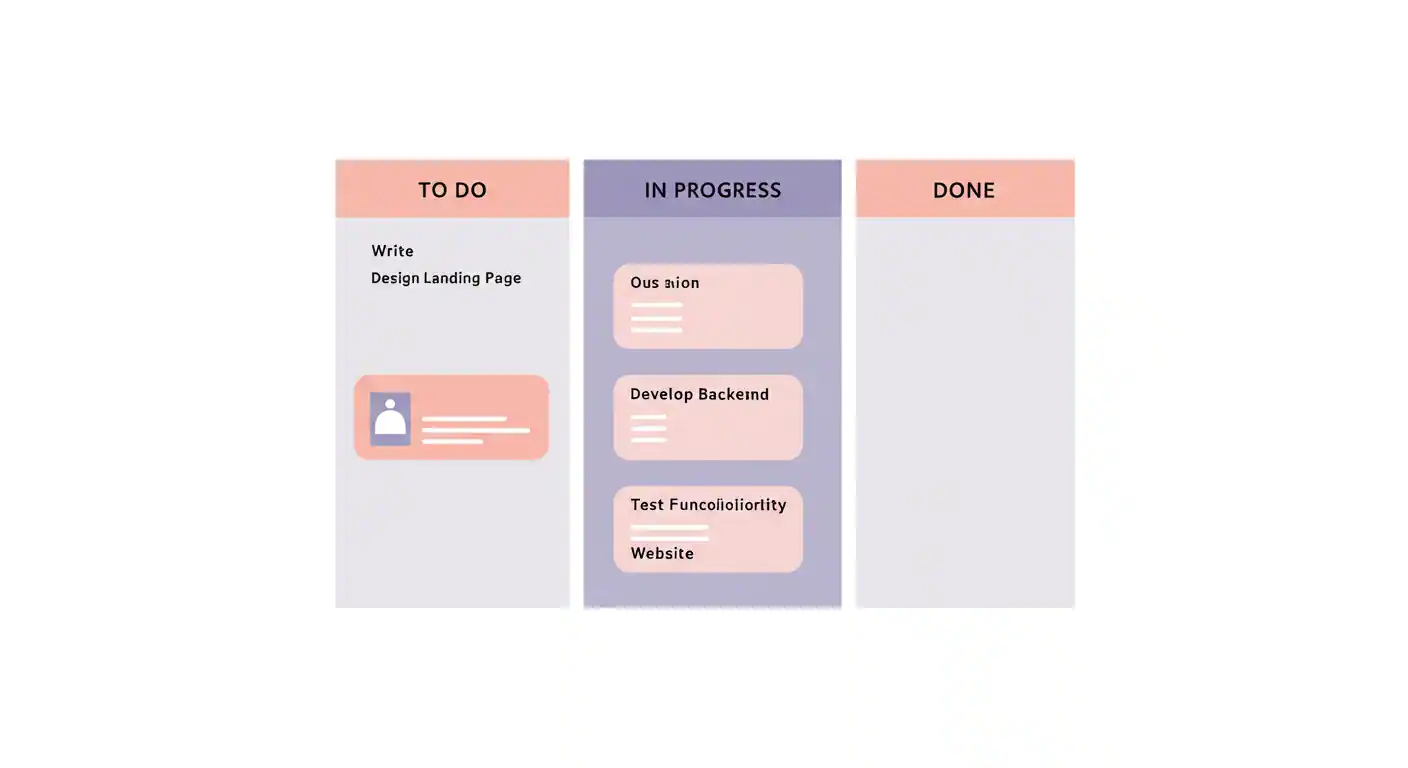
1️⃣ To Do / Backlog
- All tasks you need to complete
- Prioritized from top to bottom
- Maximum recommended: 20 cards
2️⃣ In Progress / Working
- Tasks being actively executed
- CRITICAL LIMIT: 3-5 cards max (here’s the magic)
- One card per person as general rule
3️⃣ Done / Completed
- Tasks completed in the last 30 days
- Visual celebration of progress
- Can be archived monthly
???? Optional Columns (Advanced Level):
- In Review: For tasks needing approval
- On Hold: For tasks blocked by external factors
- Canceled: For work that’s no longer needed
Step 3: Create Your First Cards (The Art of Writing Effective Tasks)
A poorly written card can sabotage your entire system. Here’s the formula that works:
???? Anatomy of a Perfect Kanban Card:
???? Descriptive Title (5-8 words)
❌ Bad: “Call client”
✅ Good: “Call John Smith – website quote”
???? Clear Owner
• One person per card
• If multiple people involved, define who leads
???? Realistic Deadline
• Not all tasks need dates
• Only those with real deadlines
????️ Useful Tags
• Client/Project • Priority (High/Medium/Low)
• Type (Call/Email/Meeting/Analysis)
???? Card Examples by US Business Type:
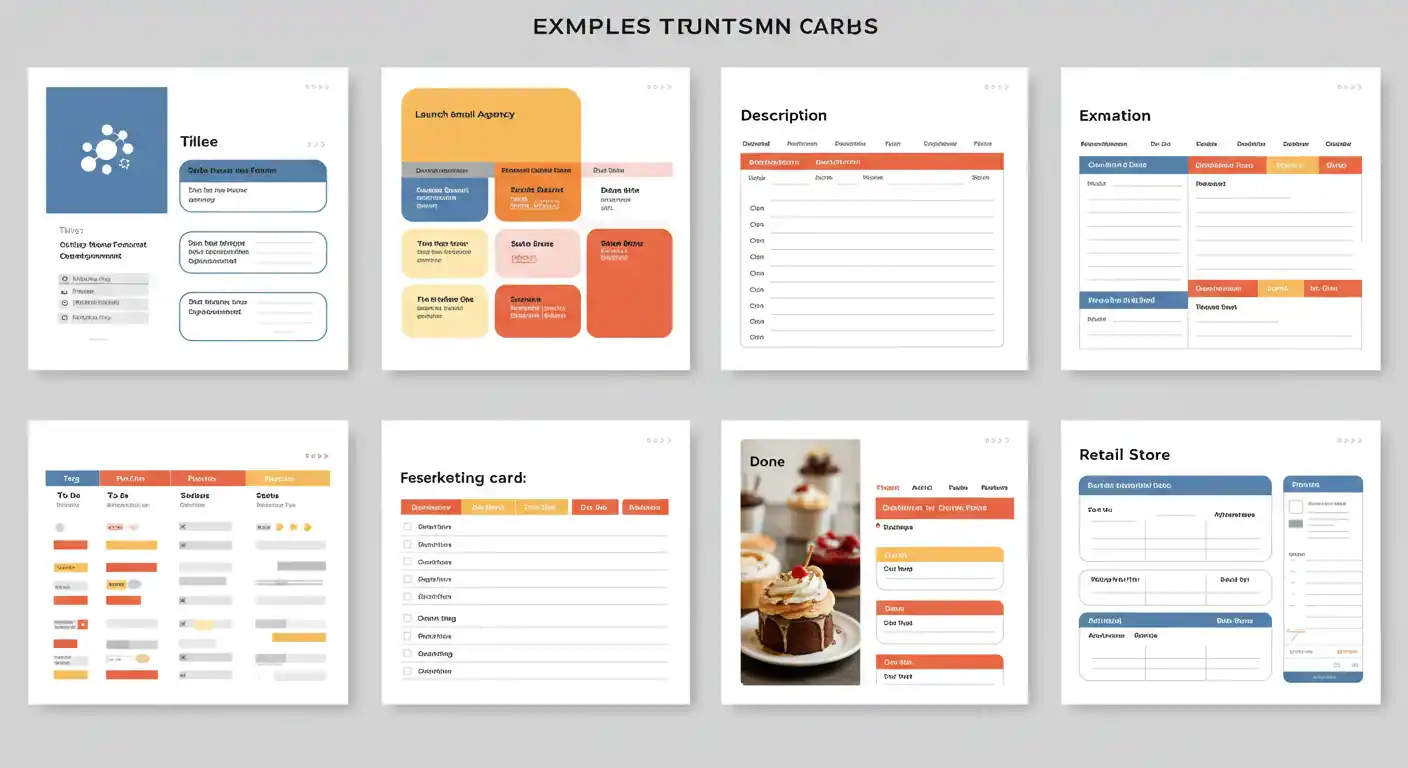
???? For a Digital Agency in NYC:
Title: Design Facebook ads – Black Friday Campaign
Owner: Sarah (Designer)
Due: Nov 15, 2024
Tags: #Client-TechStartup #High-Priority
???? For a Restaurant in Austin:
Title: Update winter menu items
Owner: Chef Mike
Due: Dec 1, 2024
Tags: #Operations #Medium-Priority
Step 4: Set WIP Limits (Work in Progress) – The Productivity Secret
Work in progress must be limited. This is done to reduce the time it takes for a work item to move through the workflow stages.

???? Why Limit WIP?
The multitasking myth: Your brain (and your team’s) can’t efficiently process multiple complex tasks simultaneously. Limiting work in progress allows you to control delivery time and reduce lead time.
???? How to Calculate Your WIP Limits:
???? Basic Formula: 1.5 x Number of team members
- 1 person: 2 tasks max in “In Progress”
- 3 people: 4-5 tasks max
- 5 people: 7-8 tasks max
???? Signs Your WIP is Too High:
- ❌ Tasks taking weeks to complete
- ❌ Constant feeling of “everything is urgent”
- ❌ Lots of started work, little finished
- ❌ Chronic team stress
Step 5: The 5-Minute Daily Meeting (Maintenance Ritual)
In Kanban, improvement must be constant, and you can’t achieve that without feedback spaces. The key isn’t long meetings, but quick and consistent check-ins.

⏰ The American Business Daily Standup:
⏰ Duration: 5 minutes max
???? Schedule: Same time every day
???? Participants: Only those executing tasks
???? The 3 Magic Questions:
- What card did you complete yesterday?
- What card are you working on today?
- Is anything blocking your progress?
Action Module: Custom Kanban Board Generator
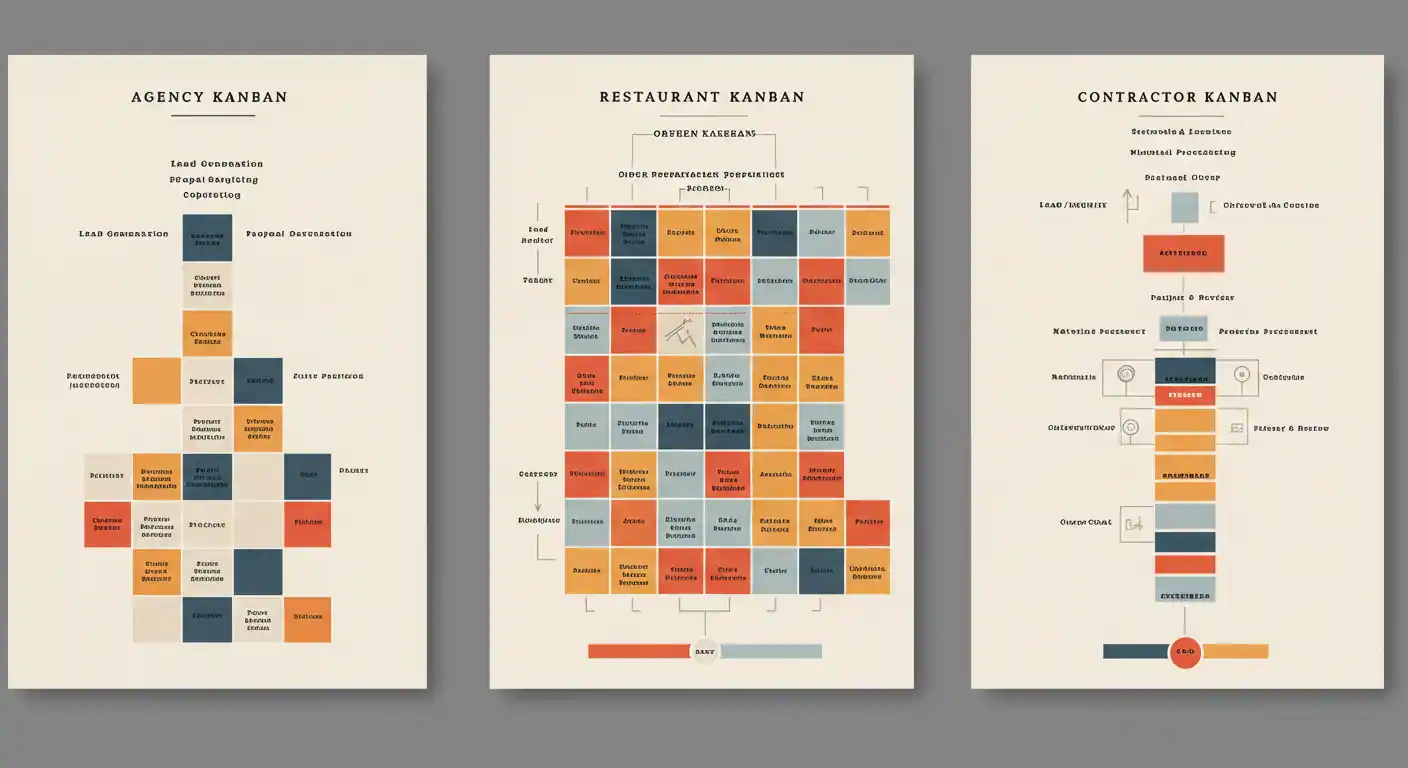
???? Kanban for Digital Marketing Agency
Recommended Columns:
1. Brief → 2. Creating → 3. Client Review → 4. Revisions → 5. Delivered
WIP Limits: Brief (10) | Creating (4) | Review (3) | Revisions (2)
Sample Cards:
- Design Facebook creatives – [Client] Campaign
- Develop landing page [Product]
- Monthly results analysis – [Client]
- Strategy meeting with [Client]
???? Kanban for Restaurant/Local Business
Recommended Columns:
1. Ideas → 2. Planned → 3. Executing → 4. Completed
WIP Limits: Ideas (20) | Planned (8) | Executing (5)
Sample Cards:
- Update seasonal menu [Season]
- Train staff on new protocols
- Social media promotion [Event]
- Equipment maintenance [Equipment]
???? Kanban for Contractor/Service Business
Recommended Columns:
1. Quotes → 2. Approved → 3. On Site → 4. Review → 5. Invoiced
WIP Limits: Quotes (15) | Approved (6) | On Site (3) | Review (4)
Sample Cards:
- Quote remodeling [Address]
- Purchase materials project [Client]
- Install [Service] – [Location]
- Final delivery meeting [Project]
Real-World Examples from US Businesses
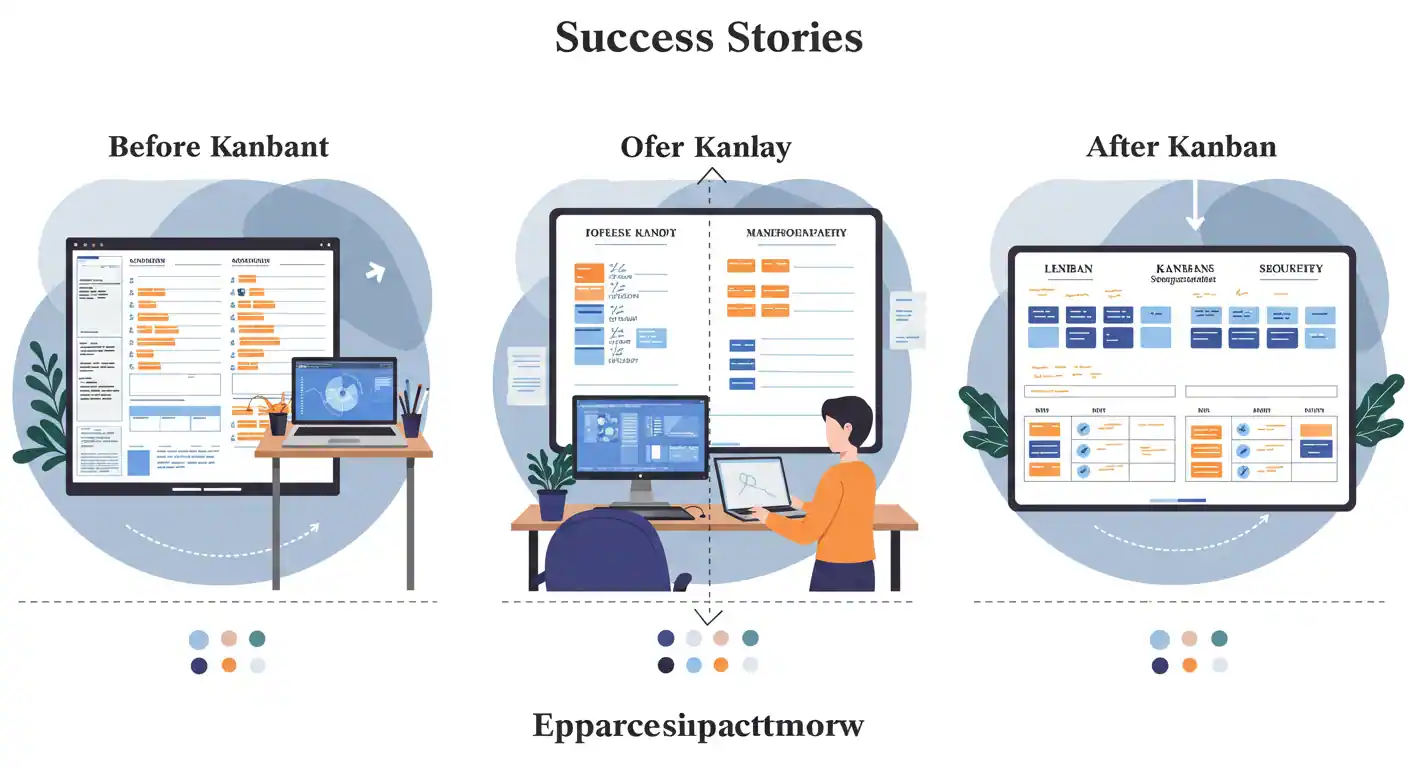
???? Tech Startup in Silicon Valley – “InnovateNow”
The Problem: Delayed product launches, confused stakeholders, burnt-out development team
The Kanban Solution:
- Tool: Asana (for multiple view capabilities)
- Columns: Backlog → Development → QA → Staging → Production → Done
- WIP Limits: Development (4), QA (2), Staging (2)
- Result: 45% faster time-to-market, 60% reduction in bugs
Silicon Valley Specific Tricks:
- Color-coded labels for different product features
- Slack integration for instant notifications
- Daily standups at 9:00 AM PST to align with East Coast partners
???? E-commerce Store in Texas – “LoneStarGoods”
The Problem: Lost orders, inventory chaos, shipping delays
The Kanban Solution:
- Tool: Trello (simplicity for small team)
- Columns: Orders → Picking → Packing → Shipping → Delivered
- WIP Limits: Picking (25), Packing (15), Shipping (30)
- Integration: Shopify connection via Zapier
????️ Construction Company in Florida – “SunCoast Builders”
The Problem: Overlapping projects, lost estimates, manual tracking
The Kanban Solution:
- Tool: ClickUp (for field customization)
- Columns: Leads → Estimate → Approved → Scheduled → Active → Completed
- WIP Limits: Active (3), Scheduled (5)
- Custom Fields: Project value, weather dependency
Behind-the-Scenes Tips: Secrets That Actually Work

???? Strategic Color Power
Color Code We Use:
- ???? Red: Urgent (angry client, deadline today)
- ???? Yellow: Important (deadline this week)
- ???? Green: Normal (everything under control)
- ???? Blue: Ideas/Future (not urgent but valuable)
- ⚫ Gray: On hold (waiting for external factors)
???? Simple Automations
In Trello:
- Card reaches “Done” → Auto-archive after 30 days
- Card tagged “Urgent” → Instant notification to owner
In Asana:
- Task marked complete → Auto-move to “Done”
- Task inactive for 7 days → Notification to manager
???? The 80/20 Rule for Kanban
80% of your results will come from:
- Maintaining consistent WIP limits
- 5-minute daily meetings religiously
- Writing clear and specific cards
20% advanced that can wait:
- Complex reports
- Sophisticated integrations
- Predictive metrics
Frequently Asked Questions (FAQ)
How long does it take to implement Kanban?
1 hour for basic setup, 2-3 weeks for team adaptation. The key is starting simple and adjusting progressively.
Does Kanban work for remote teams?
Absolutely. In fact, it’s more effective than for in-person teams because it centralizes all work communication in one place visible 24/7.
Which tool is best to start with?
Trello for simplicity, Asana for growth. If your team is under 5 people and the process is simple, go with Trello. If you need more features or plan to scale, choose Asana.
Can I use Kanban with other methodologies?
Yes. You can implement the Kanban framework into any current process or workflow. Kanban complements especially well with Scrum and agile methodologies.
How do I handle tasks that depend on others?
Use tags or “waiting” cards. In advanced tools like ClickUp, you can create formal dependencies.
Your Next Step: Implement Kanban in 60 Minutes
???? Your Action Plan for the Next Hour:
⏰ Minutes 0-15: Tool Decision
- Physical or digital?
- If digital: sign up for Trello or Asana
- If physical: get whiteboard and post-its
???? Minutes 15-30: Board Setup
- Create 3 basic columns
- Set WIP limits
- Configure colors/basic tags
???? Minutes 30-50: First Cards
- List all this week’s tasks
- Convert 10-15 to cards with correct formula
- Distribute them in corresponding columns
???? Minutes 50-60: First Meeting
- If you have a team: explain system in 5 minutes
- Define daily meeting schedule
- Set calendar reminder
???? Need Personalized Help?
At MiNegocioTop.com we become your strategic partner to optimize processes, improve productivity, and drive growth for your small business.
Contact us for personalized consulting where we analyze your current workflow and design the perfect Kanban system for your industry, team size, and growth objectives.
???? Remember: The best Kanban system is the one you actually use. Start simple, maintain consistency, and adjust based on what works for your business reality.
